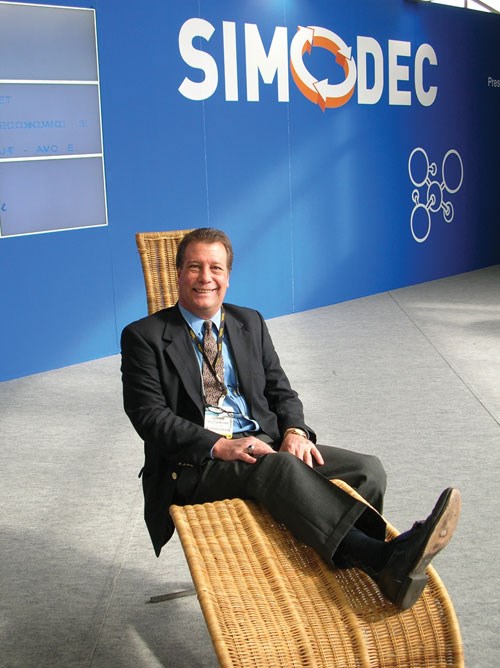Extreme Machining
Mostly, I want to tell you about my visit to the biennial Simodec show in the Arve Valley in France. But first, as a contrast, let me give a short report on what I saw in Spain at its national show.
Mostly, I want to tell you about my visit to the biennial Simodec show in the Arve Valley in France. But first, as a contrast, let me give a short report on what I saw in Spain at its national show.
I spent a couple of days in Bilbao at the Biemh show before moving on to Simodec. I had not visited this show in several editions, so it was nice to re-acquaint myself with the industry there. This exhibition attracts 1,761 companies from 36 countries. In 2008, the good word in Spanish machine tool circles is “windmills,” and the groaner is “exchange rate.”
Virtually every booth we visited was gaga over the emergence of wind power generation in Germany, Scandinavia and Europe, in general. We were told the U.S. is behind Europe in implementing this technology, but it’s going to come. That may actually be a good thing since the big machines needed to make wind power components are virtually sold out until 2012 or longer, and perhaps by then the dollar will strengthen.
If you’ve seen these “pin wheels” up close, their component size is amazing. Always known for giant boring mills, VTLs and traveling column machines, it’s easy to understand why the Spanish machine tool industry is in full bloom. It takes really big machines to process really big parts, and these parts are in demand.
As for the precision machined parts industry, perhaps we should monitor this trend in alternative power generation. Large parts tend to be made up of smaller parts.
That brings me to our next stop—Simodec—the International Screw-Cutting Machine Tool Show. It is the European version of the U.S. PMTS and has been held in France since 1954.
Aside from the concentration of screw machine shops found in the nearby Arve Valley, it is the most beautiful trade show location I’ve seen in my travels. Nestled at the foot of Europe’s highest Alp, Mt. Blanc, no less than three former winter Olympic sites are within 100 km of the exposition center.
This year, the buzz among precision machined parts producers is that business is as good as this region’s high water mark in 2000. Strong sectors include automotive (so far), medical, fasteners, the watch industry and alternative energy. Reasons cited include the investment in automation over the past few years to offset a skilled labor shortage and to lower overall costs to compete with Eastern Europe.
Much of the bleeding off of work to Eastern Europe has slowed, we were told, because as some of the Eastern European bloc has joined the EU, upward pressure on wages is reducing its competitive advantage. Plus, the bloc is either using the Euro or soon will be. I asked about outsourcing work to the U.S. to take advantage of Europe’s strong position, and most parts producers are at least considering it in the short term.
All in all, it was a good show for the precision machined parts industry. Attendance was up 11 percent with 14,900 visitors from 51 different countries visiting 275 exhibits representing 40 countries. If you haven’t visited this show, perhaps you should mark your calendar for March 2010.





